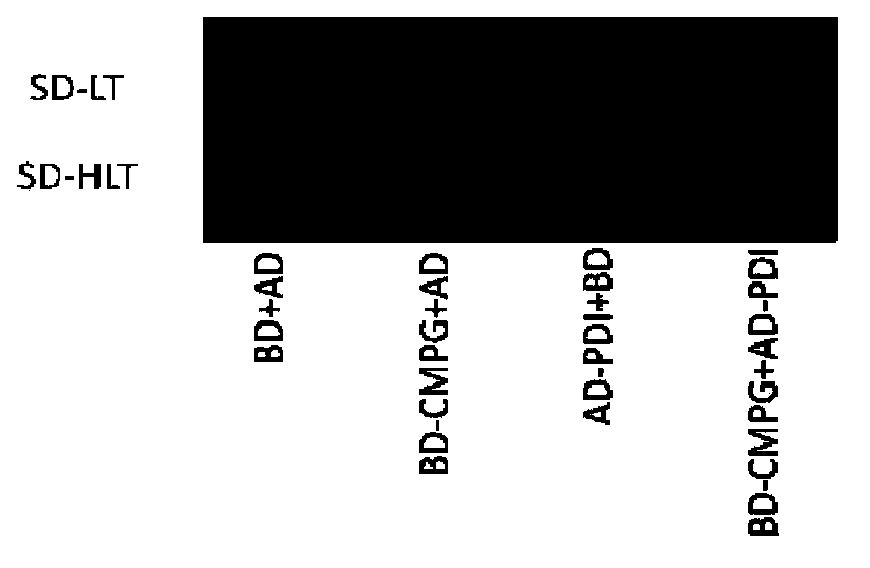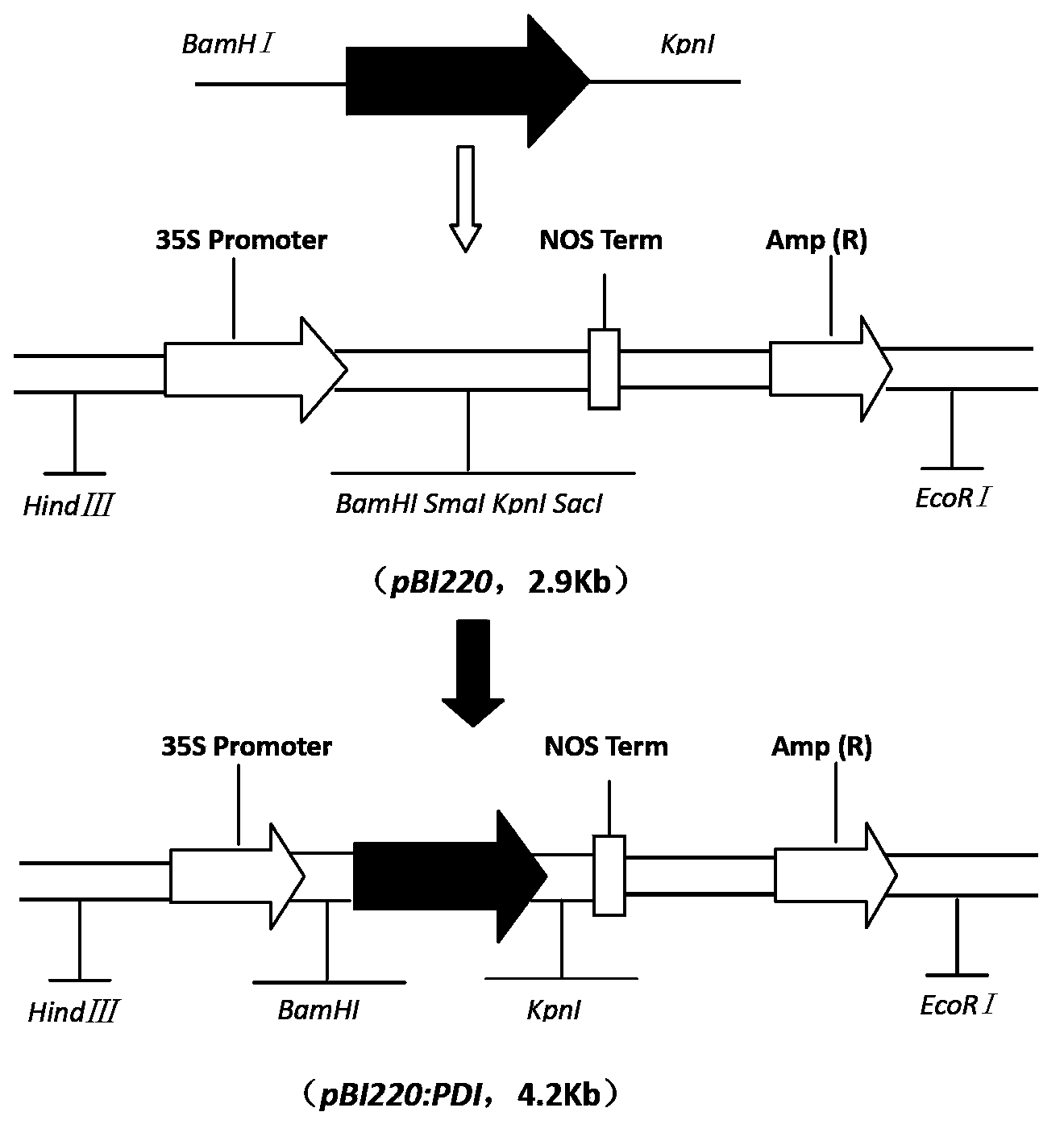A Disulfide Isomerase Gene and Its Application
A disulfide and isomerase technology, applied in the field of genetic engineering, can solve the problems of increasing manpower, material resources, environmental pollution, etc., and achieve the effect of improving resistance
- Summary
- Abstract
- Description
- Claims
- Application Information
AI Technical Summary
Problems solved by technology
Method used
Image
Examples
Embodiment 1
[0033] Example 1 Using yeast two-hybrid to clone the disulfide isomerase gene Hv-PDI
[0034] Diploid pilosetris (references: Qi Lili, Chen Peidu, et al., New source of resistance to wheat powdery mildew—gene Pm21, Acta Crops Sinica, 1995, 21(3):257-262) is a material highly resistant to powdery mildew. Hv-CMPG is a powdery mildew resistance-related gene located on diploid P. villosa 6V cloned by the Institute of Cytogenetics, Nanjing Agricultural University (Liu Yuan. Cloning of Hv-CMPG gene in P. villosa and preliminary analysis of its function[D] .Nanjing.Nanjing Agricultural University, 2007), with Hv-CMPG as bait, use polyethylene glycol-lithium acetate transformation method to screen yeast two-hybrid cDNA library, get a Hv-CMPG interaction gene (attached figure 1 ). The interacting gene was sequenced, and a sequence with a size of 1615 bp was obtained, as shown in SEQ ID NO.1. Search the open reading frame of the obtained sequence through the ORF finder on the NCBI web...
Embodiment 2
[0035] Embodiment 2Hv-PDI gene is subjected to the expression characteristic that powdery mildew induces
[0036] Sow the wheat powdery mildew-resistant wheat seeds (references: Qi Lili, Chen Peidu, et al., New source of resistance to powdery mildew in wheat - gene Pm21, Acta Phylogenetica Sinica, 1995, 21(3): 257-262) in a petri dish to germinate , and transplanted to pots after dew whitening (isolated with a cylindrical transparent plastic sheet around, and closed with filter paper at the top to form an environment free of powdery mildew). At the three-leaf stage, shake off the fresh spores of Nanjing local mixed powdery mildew cultured on the susceptible variety Sumai No. 3 on the seedlings of A. The leaves of T. villosa inoculated with powdery mildew were stored at 16°C. Samples were taken at 0h, 30min, 45min, 1h, 2h, 6h, 12h, 24h, 48h, and 72h after inoculation, and stored in a -70°C refrigerator for later use. TRIZOL (Invitrogen) was used to extract the RNA from the le...
Embodiment 3
[0038] Example 3 Hv-PDI sense expression vector construction
[0039]Using the above-mentioned C. villosa cDNA induced by powdery mildew as a template, the primer pair P3 (CGGGATCCATGCGTCCGGCCATCC (SEQ ID NO.5)) and P4 (GGGGTACCTCACAACTCGTCGTTGGGC (SEQ ID NO.6) that can amplify the protein coding region of the Hv-PDI gene )) PCR amplification was carried out, and the amplified fragment with a size of 1323bp was recovered. The amplified fragment was inserted into pMD18-T (Takara), sequenced and compared with the original sequence, it was Hv-PDI gene, and the amplified target fragment was inserted into the vector pBI220 (Jefferson RA, Kavanagh TA) with BamHI and Kpnl double enzyme digestion , Bevan MW. GUS fusions: beta-glucuronidase as a sensitive and versatile gene fusion marker in higher plants. EMBO J.1987, 6: 3901-3907.) Between the multiple cloning sites BamHI and Kpnl behind the 35S promoter. Thus, the target gene Hv-PDI was cloned to the downstream of the strong promote...
PUM
 Login to View More
Login to View More Abstract
Description
Claims
Application Information
 Login to View More
Login to View More - R&D
- Intellectual Property
- Life Sciences
- Materials
- Tech Scout
- Unparalleled Data Quality
- Higher Quality Content
- 60% Fewer Hallucinations
Browse by: Latest US Patents, China's latest patents, Technical Efficacy Thesaurus, Application Domain, Technology Topic, Popular Technical Reports.
© 2025 PatSnap. All rights reserved.Legal|Privacy policy|Modern Slavery Act Transparency Statement|Sitemap|About US| Contact US: help@patsnap.com



